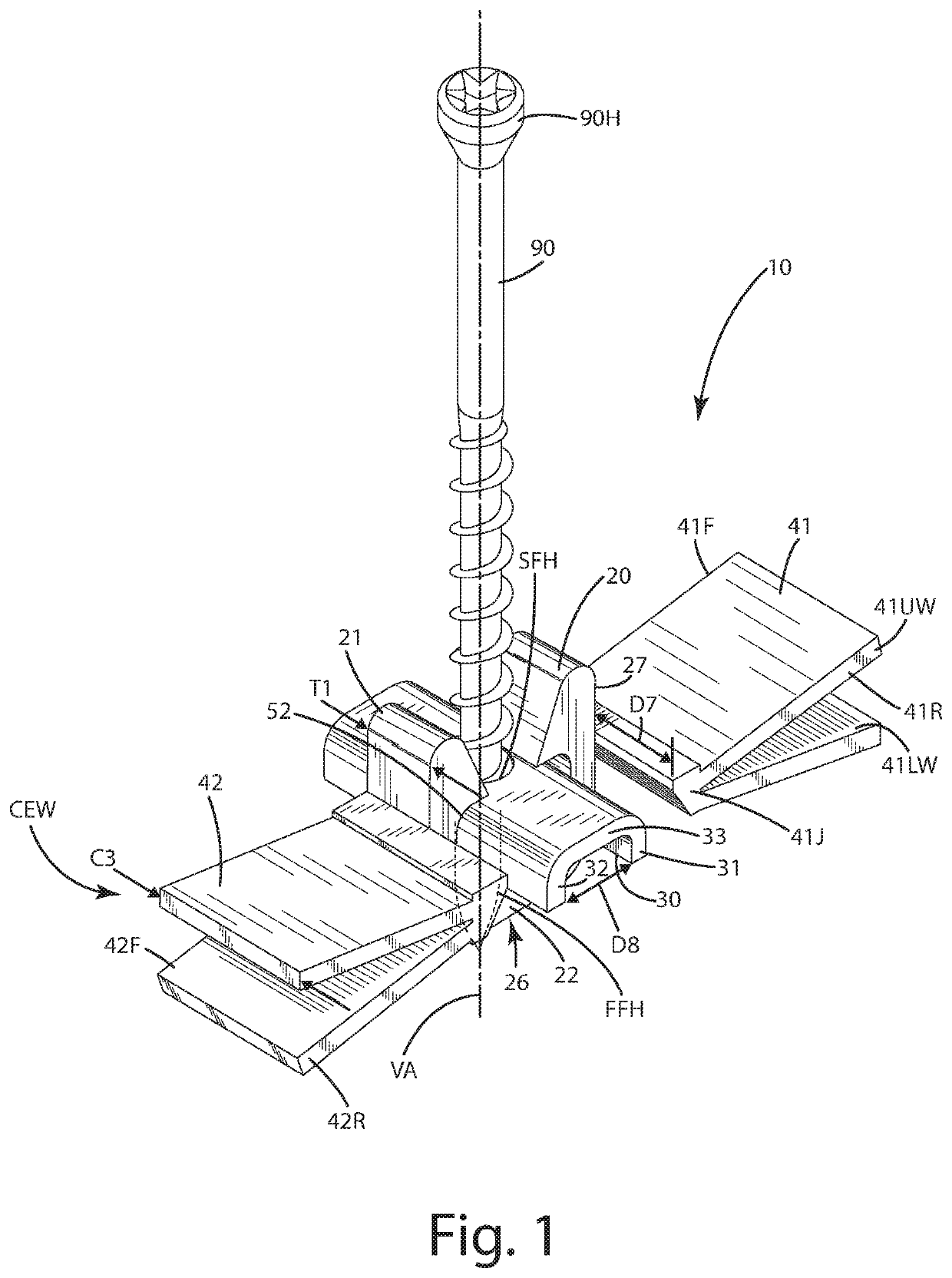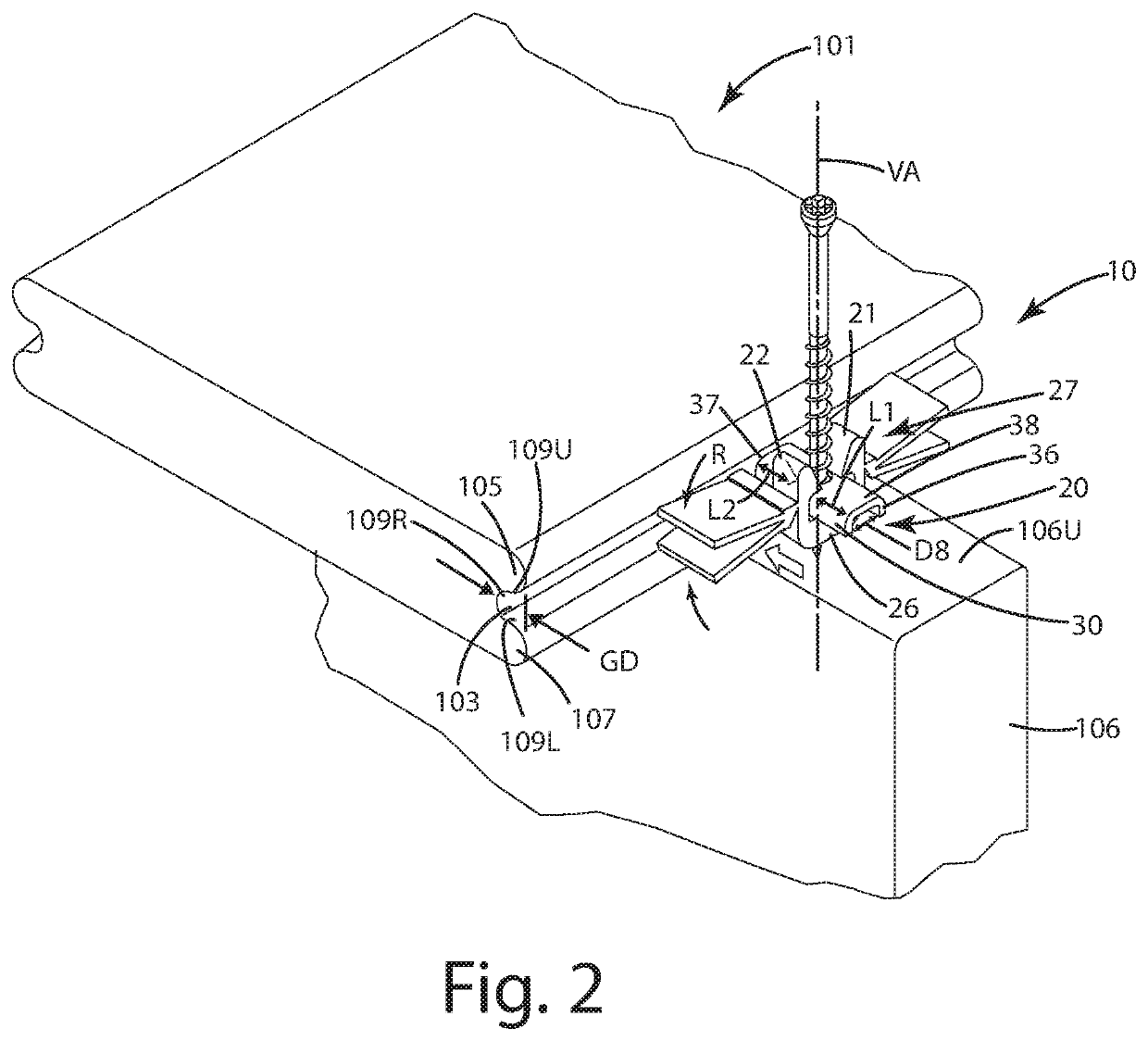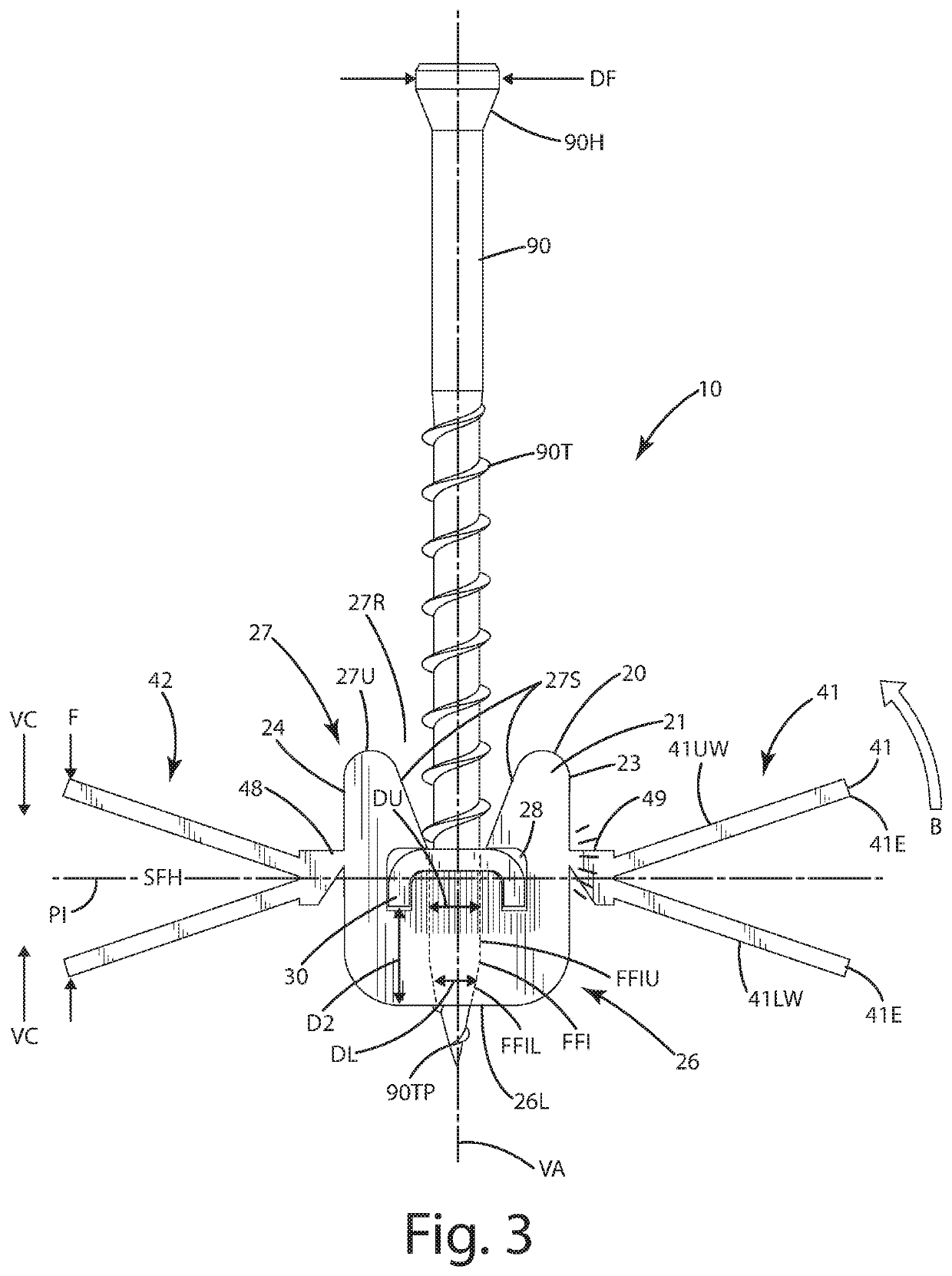Hidden fastener unit and related method of use
a fastener unit and hidden technology, applied in the field of fastener units, can solve the problems of affecting the use of users, presenting safety hazards, and affecting the use of nails or screws, and achieve the effect of being easily perceived by users
- Summary
- Abstract
- Description
- Claims
- Application Information
AI Technical Summary
Benefits of technology
Problems solved by technology
Method used
Image
Examples
fourth embodiment
[0190]As shown in FIGS. 17-20, the fastener unit 410 can include one or more board engagement element 440. As illustrated in this fourth embodiment, the board engagement element 440 can extend above the spacer block 420. This board engagement element 440 can be configured to engage an upper surface 105 of a first board 101 to cooperatively clamp with the grip element 430, the spacer unit 410 adjacent the side surface 101S of the board 101. This board engagement element 440 can include first and second legs 441 and 442 that can extend downward to spacer block. The legs can contact, engage or be joined with and / or integral with the spacer block 420. The board engagement element 440 can also include a first platform 443 and / or an engagement arm 444 to sometimes referred to as a resilient arm or engagement arm herein.
[0191]With reference to FIGS. 17-20, the first and second legs can be joined to the upper portions 420U of the spacer block 420. Each of the legs can include an upper end 4...
fifth embodiment
[0212]In the fifth embodiment, the board engagement element 540 and its components can engage the spacer block 520 to set a distance between the board engagement element 540 and the grip element 530. In turn, this can set the fastener unit 510. The fastener unit 510 as shown can be a two piece unit, with the board engagement element separable and independently constructed from the spacer body, in a clamped mode or an expanded mode. For example, the engagement of the legs 541 and the track 522L shown in FIG. 25 can set a preselected distance between the arm 544, and in particular its lowermost portion 544N, and the grip upper surface 530U of the grip element 530. By adjusting the legs, and sliding them within the respective tracks, the distance D2 can be altered to another distance, for example D21, which can be a lesser distance, when the fastener unit 510 is in a clamping mode shown in FIG. 28 relative to an extended mode shown in FIG. 25. In general, the first and second legs are ...
tenth embodiment
[0275]An eleventh alternative embodiment of the fastener unit is illustrated in FIGS. 68-72 and generally designated 1110. The fastener unit of this embodiment is similar in structure, function and operation to the embodiments described above with several exceptions. For example, this unit 1110 can include a fastener 1190 similar to the fasteners described above. It also can include a grip element 1130 that is disposed in an aperture or recess 1128 defined by a spacer block 1120, similar to the embodiments described above. The grip element 1130 optionally can extend from and beyond the front and rear surfaces 1121, 1122 of the spacer block 1120. The spacer block 1120 can be configured to establish a gap between adjacent boards, and sized with a thickness T12 similar to the thicknesses T1-T11 above. The unit 1110 can include first and second resilient compression elements 1141, 1142 joined with the spacer block 1120, the compression elements having fixed and moveable wings 1141F, 114...
PUM
 Login to View More
Login to View More Abstract
Description
Claims
Application Information
 Login to View More
Login to View More - R&D
- Intellectual Property
- Life Sciences
- Materials
- Tech Scout
- Unparalleled Data Quality
- Higher Quality Content
- 60% Fewer Hallucinations
Browse by: Latest US Patents, China's latest patents, Technical Efficacy Thesaurus, Application Domain, Technology Topic, Popular Technical Reports.
© 2025 PatSnap. All rights reserved.Legal|Privacy policy|Modern Slavery Act Transparency Statement|Sitemap|About US| Contact US: help@patsnap.com



